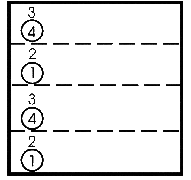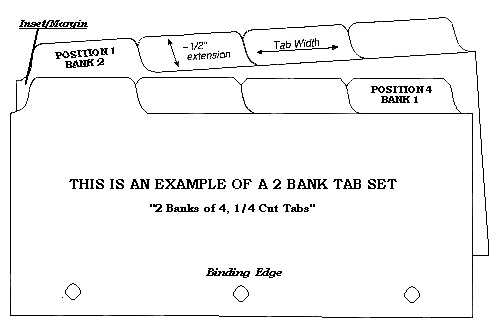












- Ideal for publications using coated and uncoated text stocks.
- Applies hot melt glue.
- Accommodates wrap-around covers with printed spines.
Our “sweet spot” is pre-collated book blocks with runs of 500 and less our binder is very effective for book blocks from copiers or digital presses that come collated. It has a quality side-glue unit and even uses separate glue on the hinges. It can stop the glue on the spine, so no glue trap is required (although we still tend to recommend it). It runs coated as well as uncoated stock, too!
- Lays flat.
- Extremely durable and resilient.
- Comes in a wide range of colors for ink matching.
- Can be applied to thin and thick books, including those with up to 30" spines.
- Can be applied to thin and thick stocks, including chipboard and covers with printed spines.
- More cost-effective than plastic comb (GBC).
- Hand and fast-turn automated production.
- Lays flat.
- Very durable.
- Less gap in cross-overs than spiral binding.
- Can be applied to thin and thick books, including those with up to 30" spines.
- Can be applied to thin and thick stocks, including chipboard and covers with printed spines.
- More cost-effective than plastic comb (GBC).
- Hand and fast-turn automated production.
Seattle Bindery's equipment automatically tabs, punches holes, feeds the elements through the holes and closes the wire or crimps the coil.




Colors below are not exact representation of Actual film. CONTACT USC for exact mylar samples.
Colors below are not exact representation of Actual film. CONTACT US for exact mylar samples.
Know the registration capabilities of your press. If your press doesn't have perfect registration capabilities, design your jobs accordingly. Example: Rather than knock-out an image for us to foil stamp, let us over-stamp your printing. The secret to successful over-stamping is: 1) Proper ink selection - Use a wax-free ink., 2) Adequate cure time - Seventy-two hours should be considered a minimum...more curing time is better. Remember, dry to the touch is not the same as fully cured.
Stay close to the gripper. When laying out jobs that have tight registration requirements, keep the critical part of the image close to the gripper. The gripper edge is the most stable part of the sheet as it travels through the press and is the logical area to place images with which we have to register. Whenever possible, the gripper should also be the the widest side of the sheet. The worst possible layout is a long skinny sheet, such as a 4-up strip of business cards, with the gripper on the short side. The chance of us registering with an image on the tail of that sheet is slim to none.
Give us a big enough sheet to work with. This is particularly important with jobs that diecut. We need at least a 3/4 inch gripper margin and 1/2 inch waste on all sides of the diecut image. With all foiling and diecutting jobs, the stock must be bigger than the die. The smallest press sheet we can work with is 4 1/4 x 5 1/2 inches.
Provide accurate artwork for image placement. We need a combination negative to accurately place multiple foil images and foil images that register with printing.
Foil stamping and embossing are low resolution processes. We cannot foil lines thinner than 1 point or keep reverses open finer than two points. Coated stocks hold better foil detail. Avoid embossing fine lines.
Die wear out. Magnesium dies are delicate and easily damaged. They may not be suitable for some applications. Always store dies individually in protective wrappers or padded envelops. The life span of a magnesium die is 10 to 20 thousand impressions on a soft or smooth stock and less on a hard textured stock such as a linen surface. Copper dies can last over 100,000 impressions...this is not to be confused with forever.
Ask questions. We want your jobs to seem heaven sent. Let us help banish the jobs from hell before they ever get into production. If the job is headed to our shop for finishing, please include us in the pre-production process. Our staff has over 30 years of experience in the industry and it is all at your disposal...give us a call.